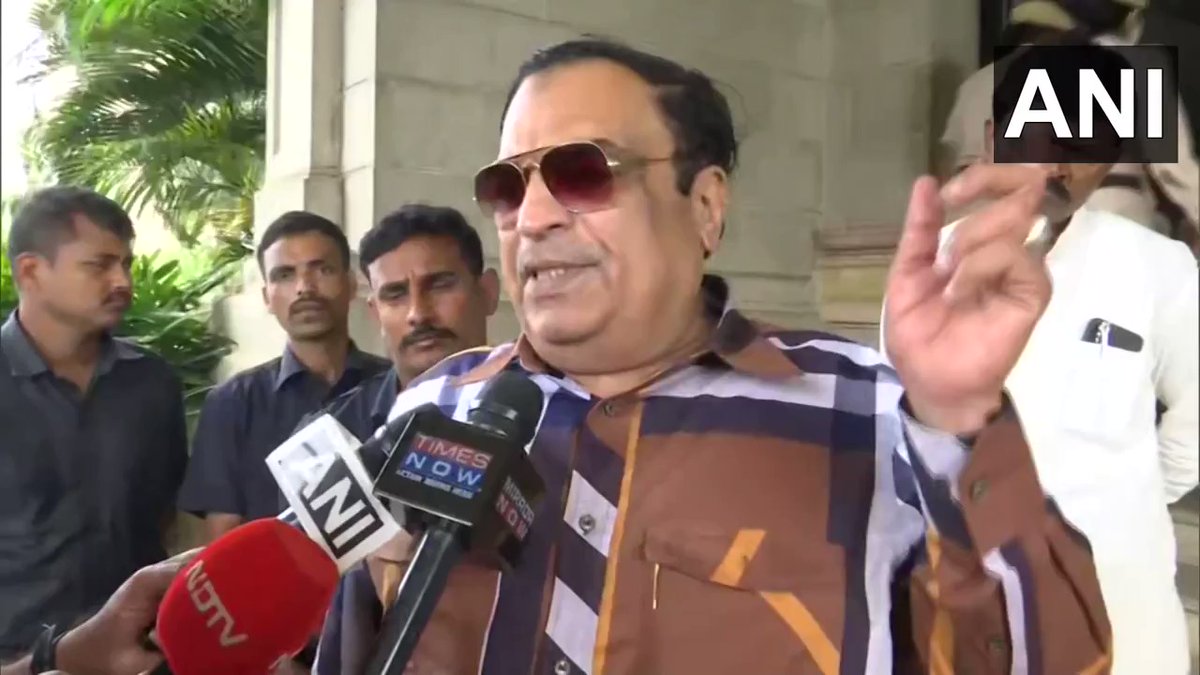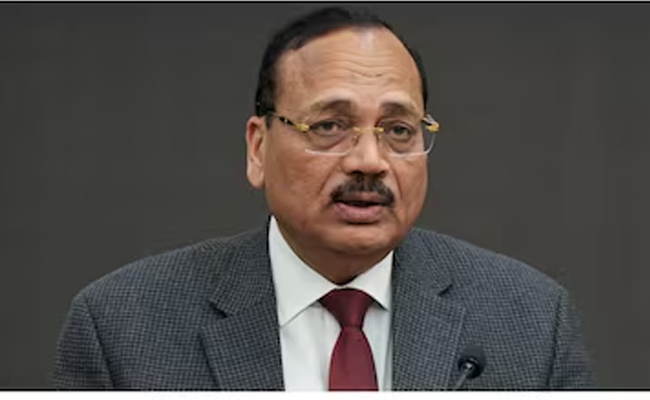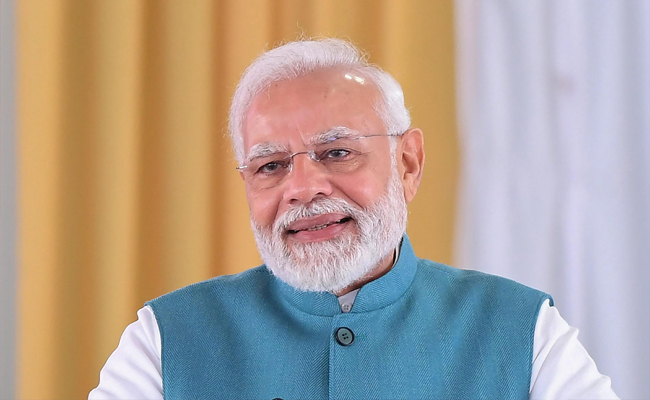Bengaluru, Sep 20: Karnataka JD(S) President C M Ibrahim on Tuesday drew comparisons between 'pallu' (loose end of a sari, worn over one's shoulder or head by women) and the hijab and said they are part of India's culture and history.
He said pallu was part of former Prime Minister Indira Gandhi's attire and is now also worn by the President of India.
"Hijab is pallu on the head, some call it hijab and some call it pallu. In Rajasthan, Rajput women don't show their face and they cover it with ghunghat, will a law be brought against it? will those women be declared as Muslim?" Ibrahim said in response to a question.
Speaking to reporters here, he said, "there was pallu on Indira Gandhi's head, there is pallu on the head of the President of India. Is the ghunghat on their head a PFI conspiracy? Having a pallu on the head is the culture of India, history of India."
"It (pallu) was on Kitturu Rani Chennamma's head, whether you call it hijab or pallu, it is the same. Some say 'paani' in Hindi, while others call it water in English...but water is water. Names change according to a language, why do you give it a religious angle?" he asked.
The former Union Minister was reacting to BJP national General Secretary C T Ravi's tweet on the picture of Congress leader Rahul Gandhi walking with a hijab clad young girl and accusing him of "glorifying hijab".
"From patronising a controversial Christian Pastor to glorifying the Hijab, Congress co-owner Rahul Gandhi is doing everything to prove that he and his party survive on "appeasement politics". Bharat Jodo Yatra is nothing but a COMMUNAL YATRA to save the sinking "Fake Gandhis," Ravi tweeted.
Ibrahim's comments came on the day, when Karnataka government told the Supreme Court that its order that kicked up a row over hijab was "religion neutral", launching a strong defence of the state and blaming the PFI for the controversy it claimed was part of a "larger conspiracy".
Insisting that the agitation in support of wearing hijab in educational institutions was not a "spontaneous act" by a few individuals, it said the state government would have been "guilty of dereliction of constitutional duty" if it had not acted the way it did.
The state government had, by its order of February 5, 2022, banned wearing clothes that disturb equality, integrity, and public order in schools and colleges. The order was challenged by some Muslim girls in the high court. It had also led to widespread protests across the state.
Let the Truth be known. If you read VB and like VB, please be a VB Supporter and Help us deliver the Truth to one and all.
Jaisalmer (PTI): Pushing for a "unified judicial policy", Chief Justice of India Surya Kant on Saturday said technology can help align standards and practices across courts, creating a "seamless experience" for citizens, regardless of their location.
He said high courts -- due to the federal structure -- have had their own practices and technological capacities, and "regional barriers" can be broken down with technology to create a more unified judicial ecosystem.
Delivering the keynote address at the West Zone Regional Conference in Jaisalmer, Kant proposed the idea of a "national judicial ecosystem" and called for an overhaul of India's judicial system with the integration of technology.
"Today, as technology reduces geographical barriers and enables convergence, it invites us to think of justice not as regional systems operating in parallel, but as one national ecosystem with shared standards, seamless interfaces, and coordinated goals," he said.
He emphasised how the role of technology in the judiciary has evolved over time.
"Technology is no longer merely an administrative convenience. It has evolved into a constitutional instrument that strengthens equality before the law, expands access to justice, and enhances institutional efficiency," he said, highlighting how digital tools can bridge gaps in the judicial system.
Kant pointed out that technology enables the judiciary to overcome the limitations of physical distance and bureaucratic hurdles.
"It allows the judiciary to transcend physical barriers and bureaucratic rigidities to deliver outcomes that are timely, transparent and principled," he said, adding that the effective use of technology can modernise the delivery of justice and make it more accessible to citizens across the country.
The CJI called for implementing a "unified judicial policy".
He said India's judicial system has long been shaped by its federal structure, and different high courts have their own practices and technological capacities.
"India's vast diversity has led to different high courts evolving their own practices, administrative priorities and technological capacities. This variation, though natural in a federal democracy, has resulted in uneven experiences for litigants across the country," he said.
Kant underscored that predictability is crucial for building trust in the judicial system.
"A core expectation citizens place upon the courts is predictability," he said, adding that citizens should not only expect fair treatment but also consistency in how cases are handled across the country.
He pointed to the potential of technology in improving predictability.
"Technology enables us to track systemic delays and make problems visible rather than concealed," he said.
By identifying areas where delays occur, such as in bail matters or cases involving certain types of disputes, courts can take targeted action to address these issues and improve efficiency, Kant said.
The CJI explained that data-driven tools could identify the reasons behind delays or bottlenecks, allowing for faster, more focused solutions.
"Technology enables prioritisation by flagging sensitive case categories, monitoring pendency in real time and ensuring transparent listing protocols," he said.
Justice Surya Kant also discussed the importance of prioritising urgent cases where delays could result in significant harm. He highlighted his recent administrative order that ensures urgent cases, such as bail petitions or habeas corpus cases, are listed within two days of curing defects.
"Where delay causes deep harm, the system must respond with urgency," he stated, explaining that technology can help courts identify and expedite such cases.
Kant also raised the issue of the clarity of judicial decisions.
He noted that many litigants, despite winning cases, often struggle to understand the terms of their judgment due to complex legal language.
"Although the orders had gone in their favour, they remained unsure of what relief they had actually secured because the language was too technical, vague or evasive to understand," he said.
He advocated for more uniformity in how judgments are written.
"A unified judicial approach must therefore extend to how we communicate outcomes," he said.
The CJI also discussed the role of AI and digital tools in improving case management. He pointed to the potential of AI-based research assistants and digital case management systems to streamline judicial processes.
"Emerging technological tools are now capable of performing once-unthinkable functions. They can highlight missing precedent references, cluster similar legal questions, and simplify factual narration," he said, explaining how these technologies can help judges make more consistent decisions.
He also highlighted tools like the National Judicial Data Grid and e-courts, which are already helping to standardise processes like case filings and tracking.
Kant reiterated that the integration of technology into the judicial process is not just about improving efficiency but about upholding the integrity of the system and strengthening public trust.
"The measure of innovation is not the complexity of the software we deploy, but the simplicity with which a citizen understands the outcome of their case and believes that justice has been served," he said.





